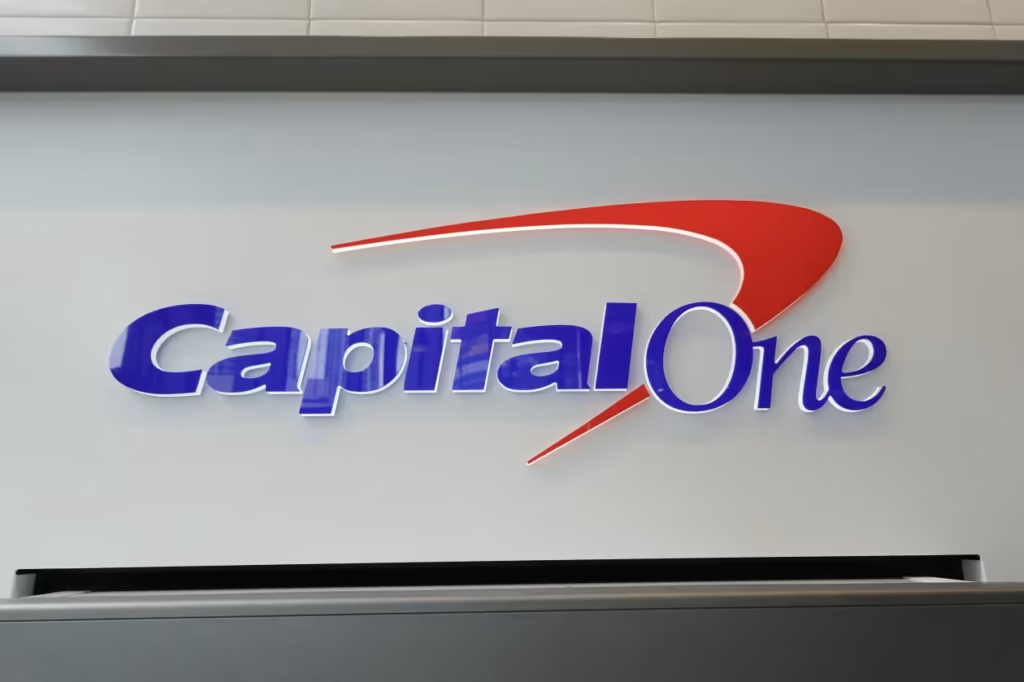After a protracted regulatory approval procedure, Capital One Financial Corp. stated on Sunday that it has successfully finalized the acquisition of Discover Financial Services. The merger agreement was announced in February 2024.
As investors were more optimistic that the acquisition would be finalized, Discover shares had returned 16% and Capital One’s (COF) stock had returned 10.9% through Friday for 2025. So far this year, the KBW Bank Index has returned 2.8%. Reinvested dividends are included in those numbers.
Investors may be questioning if Capital One’s postmerger valuation has reached its full potential. Sanjay Sakhrani, an analyst at Keefe, Bruyette & Woods, released his company’s 2027 earnings-per-share projection of $22.42 for the postmerger Capital One in a note to clients on Sunday.
On Friday, the closing price of Capital One’s stock was $197.22. Accordingly, Capital One would be selling at a low valuation of 8.8 if we adopt KBW’s 2027 EPS forecast. This is seen in the table below.
The consensus earnings predictions for the next 12 months among analysts employed by brokerage or research companies are usually the basis for forward price-to-earnings ratios. However, as Capital One merges Discover, a transition will occur. Capital One will become more reliant on credit card lending as a result. During the first quarter, 49% of the bank’s average loans retained for investment were card loans. Additionally, Capital One now owns Discover’s payment-processing network, which manages Discover-branded card transactions, in addition to Discover’s portfolio of card loans. Additionally, American Express Co. (AXP) has a processing system of its own.
According to their financial reports dated March 31, Capital One and Discover together had $638 billion in total assets, placing them ninth among the biggest bank holding firms in the United States. Here are the top 20 U.S. banks, along with their P/E ratios: the standard forward P/E, which is based on the consensus predictions of analysts FactSet polled for the upcoming year and is marked “NTM,” and one based on the consensus estimates of 2027 EPS.
The average P/E ratio based on Friday closing prices and consensus 2027 EPS predictions is 9.8, and the average forward P/E ratio for these 20 banks is 12.5. A little higher than the 8.8 value based on KBW’s 2027 EPS forecast, Capital One is trading at a forward P/E of 11.7 and 9.1 times the consensus 2027 EPS estimates.
The S&P 500’s forward P/E value, which is based on consensus 12-month EPS predictions weighted by market capitalization, is 21.6, to provide the valuations some further context. According to FactSet, the index’s average forward P/E for the last 20 years has been 16.6.
According to FactSet, the future P/E for the banking-industry group within the S&P 500 SPX is currently weighted at 12.2, and the 20-year average has been 11.5. The banks have traded at an average valuation of 69% during the last 20 years, and they currently trade at 56% of the complete S&P 500. Thus, the banks seem reasonably priced, with Capital One being much more so.
“With shares trading at a material discount to bank peers on average, we believe COF warrants a more in-line multiple given the potential for higher levels of capital return, asset diversification, and deposit funding similar to regional banks, and leverage to a rising interest rate environment,” Sakhrani stated.
Though he added that there was “$30 of potential EPS power” that year based on cost synergies, “normalization” of credit quality for the Discover card portfolio to its pre-2020 state, and a reduction in the share count through stock buybacks, the analyst referred to Capital One’s 2027 EPS of $22.42 as his “base case.”
Prior to Monday’s opening, analysts surveyed by FactSet agreed on a price objective of $216.32 for Capital One. Usually, Wall Street experts set goals for the next 12 months. The objective was 10% over Friday’s closing price for Capital One. However, for long-term investors, 12 months might be too short in this situation.
The merger was described by Sakhrani as “a transformative deal that will benefit shareholders for the next several years.” He continued: “There remains significant upside potential of around 15%-50%.”





